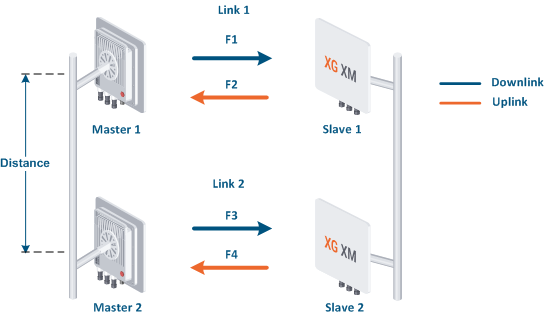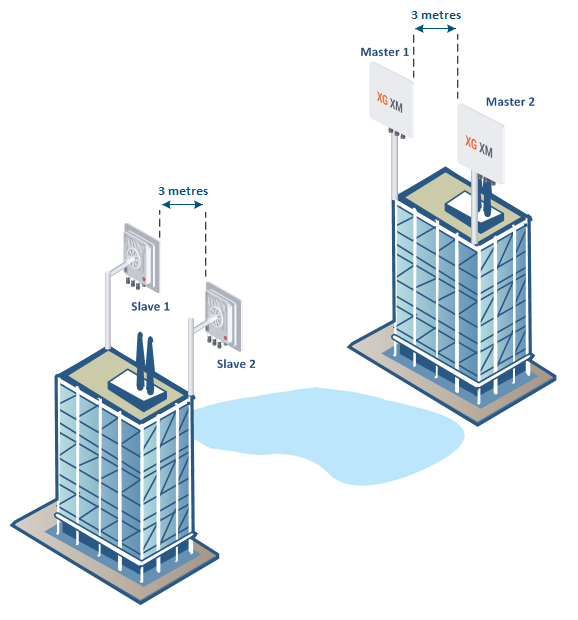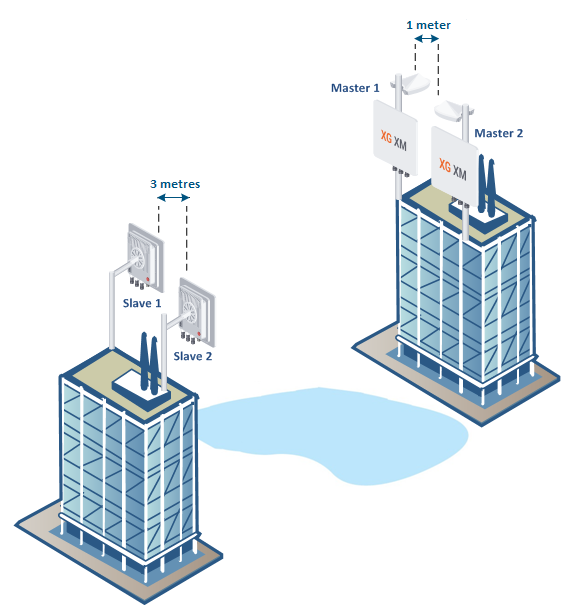...
| Center |
|---|
Let's look at an example with two wireless links:
- Link 1 is established between the Master 1 and Slave 1 devices. Link 2 between Master 2 and Slave 2.
- Links 1 and 2 are parallel to each other. The coverage areas of the Master 1 and Master 2 devices intersect and that leads to mutual interference in case of applying improper diversity methods
- The Slave 1 and Slave 2 devices can interfere with Master 2 and Master 1. However, due to the significantly higher mutual interference between Master 1 and Master 2, the interference from slave devices can be neglected.
In order to avoid the mutual interference for collocated devices, it is necessary to implement space diversity or to configure a sufficient guard interval between the used frequency bands.
This article describes space and frequency diversity in both scenarios when TDD synchronization is used or when it's not used.The InfiLINK XG and InfiLINK XG 1000 families of devices have a built-in GNSS receiver, which along with the connected external ANT-SYNC antenna allows to achieve TDD synchronization based on the signal received from the satellite system. TDD (time division duplex) synchronization assumes that data is received and transmitted by the devices at strictly allocated time intervals, in accordance with the radio frame period and with the downlink/uplink ratio settings. By default, only the slave device transmission is synchronized using the master's internal synchronization source. When the synchronization mode based on GNSS is enabled, the devices will receive a synchronization signal from the global navigation system and will transmit data simultaneously with the other InfiLINK XG devices on which the synchronization mode is activated.
Space diversity
Without synchronization
In case that the GNSS based synchronization is not used, the minimal space diversity between two devices edges of the antennas on the same mast should be at least three meters metres in the horizontal or vertical planes.
| Center |
|---|
With synchronization
In case that the synchronization is enabled, in order to achieve the minimum mutual interference between the Master 1 and Master 2 devices, the distance can be reduced to 1 meter.
| Center |
|---|
Frequency diversity
Without synchronization
When synchronization is not used between the Master 1 and Master 2 devices, the guard interval values for each channel width that are shown in the table should be used. Increasing the guard interval beyond the recommended values does not lead to a significant improvement in the RSSI.
| Center | ||||||||
|---|---|---|---|---|---|---|---|---|
|
...




